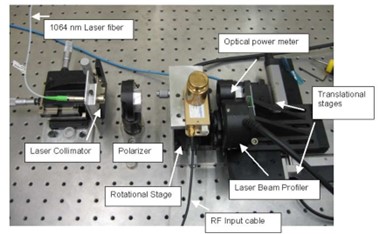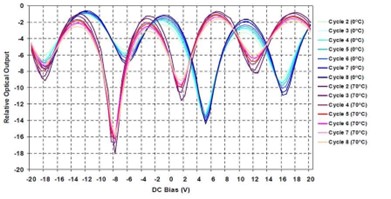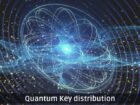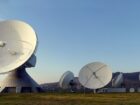Quantum communications offer many advantages for secure data transmissions, such as confidentiality, integrity and spy detectability. Quantum physics allows the encoding of information using the correlation between two or more particles (photons, atoms) thanks to quantum cryptography or Quantum Key Distribution (QKD), a method of processing information arising from the properties of quantum entanglement.
The Quantum Key Distribution (QKD) allows two (or more) parties to know when a communication channel is completely secure to exchange an encrypted key. The Quantum Key Distribution (QKD) is used before the classical information is transmitted over a conventional non-secure communication channel such as fiber optic networks. Since the laws of quantum physics affirm that a single particle such as a photon cannot be divided or cloned, it certifies the absolute security of communication. However, quantum communication channels are limited on Earth.
Insights:
- Based on quantum physics principles: Data encoded in quantum bits (qbits).
- Both parties shares the enciphering secure key through a private quantum channel. It uses the correlation between two (or more) particles (e.g. photons).
- Information is coded at the level of a single photon-per-bit.
- It uses a quantum physical property such as the polarization of a photon. E.g. polarization in vertical and horizontal directions are a coding basis for one bit.

Quantum Key Distribution (QKD) in space communications
Single photons cannot be cloned or split and, by measuring them you change them from their initial state. Superposition of states and entanglement lead to innovative methods for QKD more powerful than their classical counterparts.
Quantum communication system uses single photons to transmit unique random secret keys of ones and zeros.
- Quantum optical terminal demonstrator capable of generating entangled photon pairs.
- Feasibility of QKD for space communications.
- Single photon channel, testing atmospheric effects, entanglement distribution.
- Evaluation for future links between Space-Earth and satellites.
Proof of principle Entangled photon pair
Quantum optical terminal demonstrator capable of generating single photons pulses from faint laser source. Feasibility of QKD for space communications. Evaluation for future links between Space-Earth and satellites.
Optical free space link at a distance of 144Km. Emitting indistiguishable faint pulses with random polarization states and with different intensity
levels. High secure key rate exchange.
ALTER participated in the development and characterization of a photonic transceiver for space communication/encryption. Specifically, contributed in the characterization of the EPS planned to be used for transmitting from a LEO satellite to two separate ground stations either one common secure key simultaneously or two different secure keys consecutively. Alter Technology also performed the radiation tests, total ionizing dose (TID) and displacement damage (DD) test, on blue/violet and near-infrared (NIR) LEDs for space quantum communication.
Space Quantum communication: ALTER I+D technology roadmap
Quantum Communication in Space is becoming a cutting-edge information technology.
- ATN Optoelectronic Innovation department is open to new challenges and promising technologies in the space sector.
- ATN Optoelectronic and Innovation department offers specific high level engineering capabilities to support and promote photonic technologies for space applications.
- Assessment of optoelectronic related systems to meet specific mission requirement.
- Parametric and environmental testing for parts and systems.
- Broad collaboration with research institutes and universities.
ALTER innovation strategy in the space quantum communication field
Leap ahead in space business sector and Step forwards the information technology arena » e.g. support and analysis of future implementation and
commercialisation of QKD systems for secure encryption systems in space applications.
Space evaluation for the complete range of optoelectronics and photonics parts
- Laser & Leds characterization 250 to 5000 nm.
- Receivers modules (180 to 11000 nm).
- Optical Amplifiers & Optical modulators.
- Switches and splitters.
- Optocouplers & Photodiodes.
- Multimode and monomode Fibers.
- Liquid Crystal Devices.

In house capabilities
- Electro-optical parameters.
- Time and spectral response.
- Thermal and Thermal Vacuum.
- Endurance Tests.
- Mechanical Tests.
- Reliability test
- Radiation.
- Constructional analysis.

- Quantum Key Distribution - 7th November 2022
- Conducted Immunity - 20th May 2019
- Electrical transients Test - 2nd May 2019




